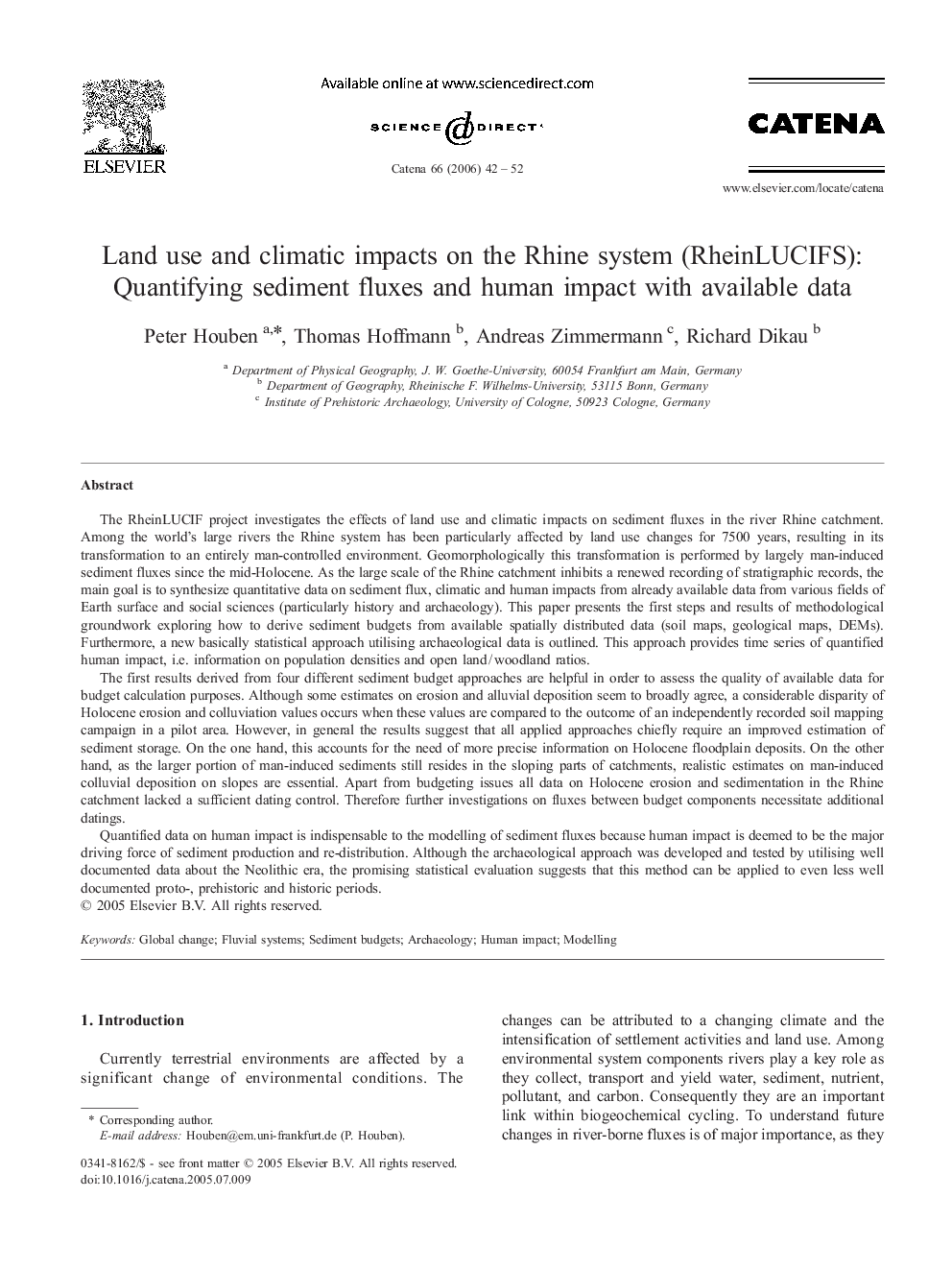| کد مقاله | کد نشریه | سال انتشار | مقاله انگلیسی | نسخه تمام متن |
|---|---|---|---|---|
| 4572722 | 1629268 | 2006 | 11 صفحه PDF | دانلود رایگان |

The RheinLUCIF project investigates the effects of land use and climatic impacts on sediment fluxes in the river Rhine catchment. Among the world's large rivers the Rhine system has been particularly affected by land use changes for 7500 years, resulting in its transformation to an entirely man-controlled environment. Geomorphologically this transformation is performed by largely man-induced sediment fluxes since the mid-Holocene. As the large scale of the Rhine catchment inhibits a renewed recording of stratigraphic records, the main goal is to synthesize quantitative data on sediment flux, climatic and human impacts from already available data from various fields of Earth surface and social sciences (particularly history and archaeology). This paper presents the first steps and results of methodological groundwork exploring how to derive sediment budgets from available spatially distributed data (soil maps, geological maps, DEMs). Furthermore, a new basically statistical approach utilising archaeological data is outlined. This approach provides time series of quantified human impact, i.e. information on population densities and open land / woodland ratios.The first results derived from four different sediment budget approaches are helpful in order to assess the quality of available data for budget calculation purposes. Although some estimates on erosion and alluvial deposition seem to broadly agree, a considerable disparity of Holocene erosion and colluviation values occurs when these values are compared to the outcome of an independently recorded soil mapping campaign in a pilot area. However, in general the results suggest that all applied approaches chiefly require an improved estimation of sediment storage. On the one hand, this accounts for the need of more precise information on Holocene floodplain deposits. On the other hand, as the larger portion of man-induced sediments still resides in the sloping parts of catchments, realistic estimates on man-induced colluvial deposition on slopes are essential. Apart from budgeting issues all data on Holocene erosion and sedimentation in the Rhine catchment lacked a sufficient dating control. Therefore further investigations on fluxes between budget components necessitate additional datings.Quantified data on human impact is indispensable to the modelling of sediment fluxes because human impact is deemed to be the major driving force of sediment production and re-distribution. Although the archaeological approach was developed and tested by utilising well documented data about the Neolithic era, the promising statistical evaluation suggests that this method can be applied to even less well documented proto-, prehistoric and historic periods.
Journal: CATENA - Volume 66, Issues 1–2, 15 May 2006, Pages 42–52